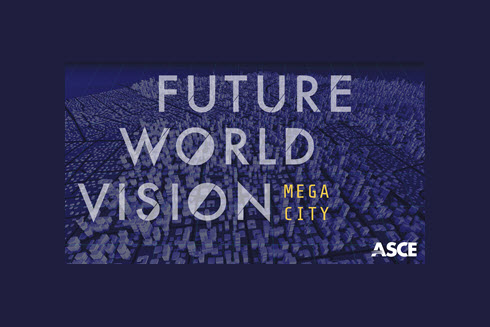If ever there was a year that proved the value of future scenario-planning research, 2020 is it.
The coronavirus pandemic has fundamentally changed the way we work and live, which means the ramifications for the civil engineering industry and the way we consider infrastructure have been huge as well.
In many ways, COVID-19 is exactly the kind of epic disruption that ASCE’s Future World Vision project is designed to help civil engineers prepare for.
“And yes, we did consider back in 2018 when we started this, a hugely infectious global pandemic,” said Jerry Buckwalter, ASCE’s chief operating and strategy officer, during a recent Future World Vision roundtable webinar.
The “Scenario-Planning for Epic Disruptions: How to Future-Proof Our Infrastructure in an Uncertain World” webinar included Buckwalter, Joshua Schank, Ph.D., chief innovation officer, Los Angeles County Metro, and Ted Henifin, P.E., general manager of the Hampton Roads Sanitation District.
Here are three key takeaways:
1. The future begins
Urgency really is the essence of the entire Future World Vision project. Working now to prepare for the future is not panic; it’s prudence.
“While much of the future-built environment won’t be apparent for many years, the first steps should be taken now to prepare for it,” Buckwalter said in the webinar. “If we wait for the nature of our future infrastructure to become obvious to us, we will be too late to optimize society’s use of it and our risks to build it.”
2. “Technology is a tool. Technology is not the goal.”
It’s easy to focus on technology whenever the discussion turns toward any vision of the future. And certainly, a wide array of potential technological advancements is integral to ASCE’s Future World Vision.
However, technology plays only a part, said Schank during the webinar, within a larger scheme of change agents. Schank spoke pointedly of the importance of public policy in shaping the future.
“A lot of people think that I’ll be focused on new technologies. But for each technology change, there’s a policy change that needs to occur,” Schank said.
“You can’t build anything if you don’t have the right policies in place to enable it. And in fact, policy remains the biggest barrier to a lot of the infrastructure needs that we see.”
3. Innovation means taking broader approaches.
Henifin outlined the Hampton Roads Sanitation District’s recent SWIFT project, Sustainable Water Initiative For Tomorrow, which was developed out of the kind of scenario-planning exercise that is the foundation of Future World Vision.
HRSD’s research projected continual changes in the regulatory environment. So rather than investing in marginal upgrades to chase new regulations every few years, Henifin’s team took a massive leap – turning wastewater into potable water all at once. And instead of discharging it, a portion of the water discharges into an aquifer for future generations.
“Innovation is a huge part of what we’re doing, and it goes well beyond just building infrastructure,” Henifin said. “I’m an engineer, and yeah, I like to build big infrastructure and solve today’s problems. But it takes a broader thinking to think about the future and where we’re going to be in 50 or 100 years.”
<>
Learn more and find out how you can contribute to ASCE’s Future World Vision project.
Sign up for the monthly Future World Vision email to stay up to speed on the project’s latest developments.


